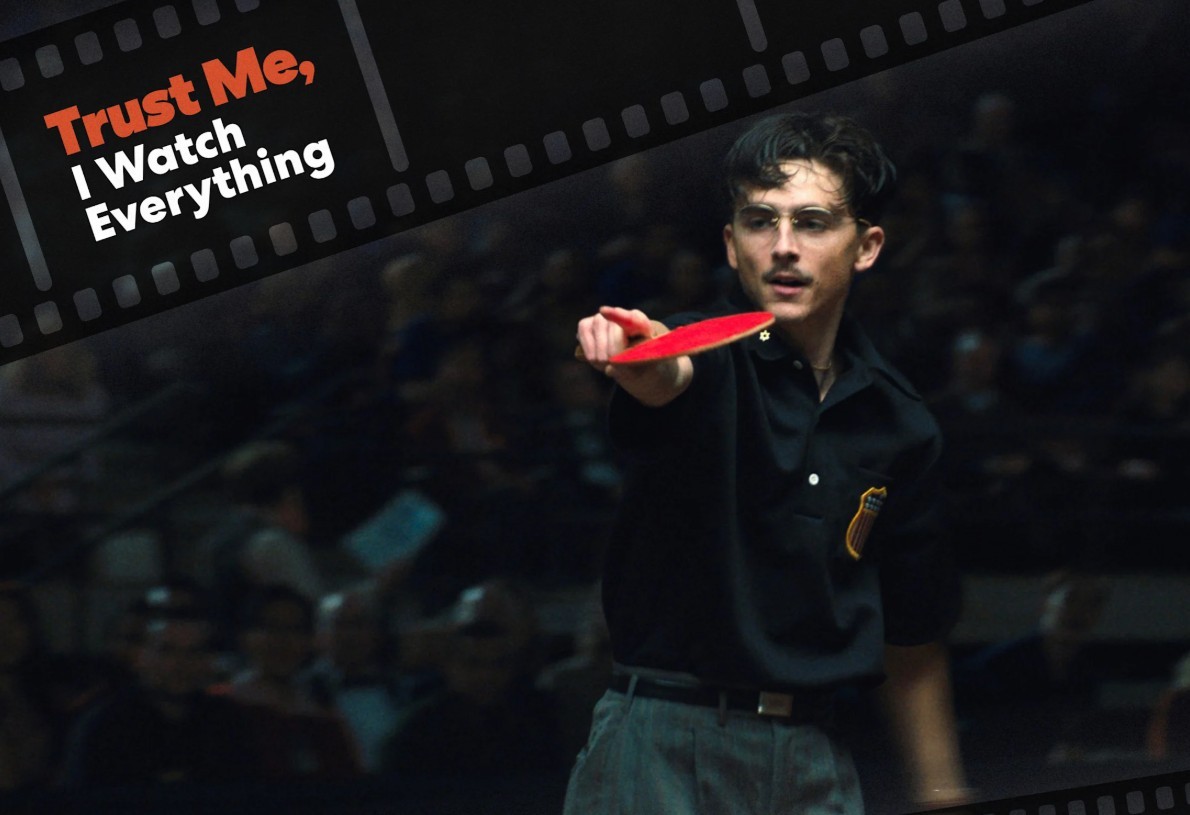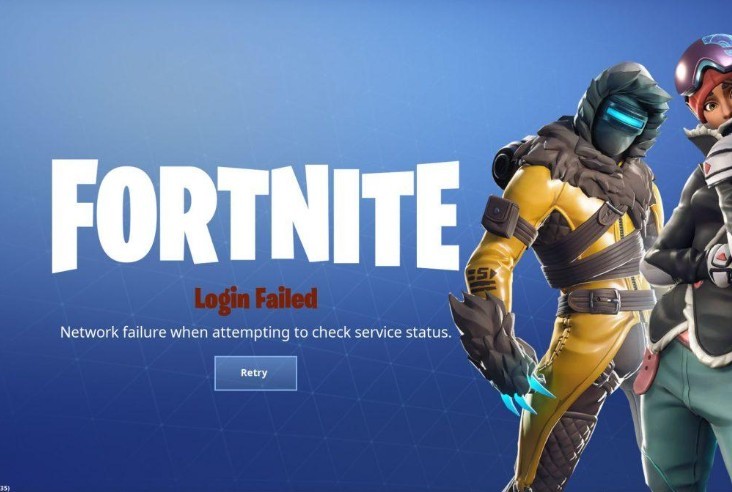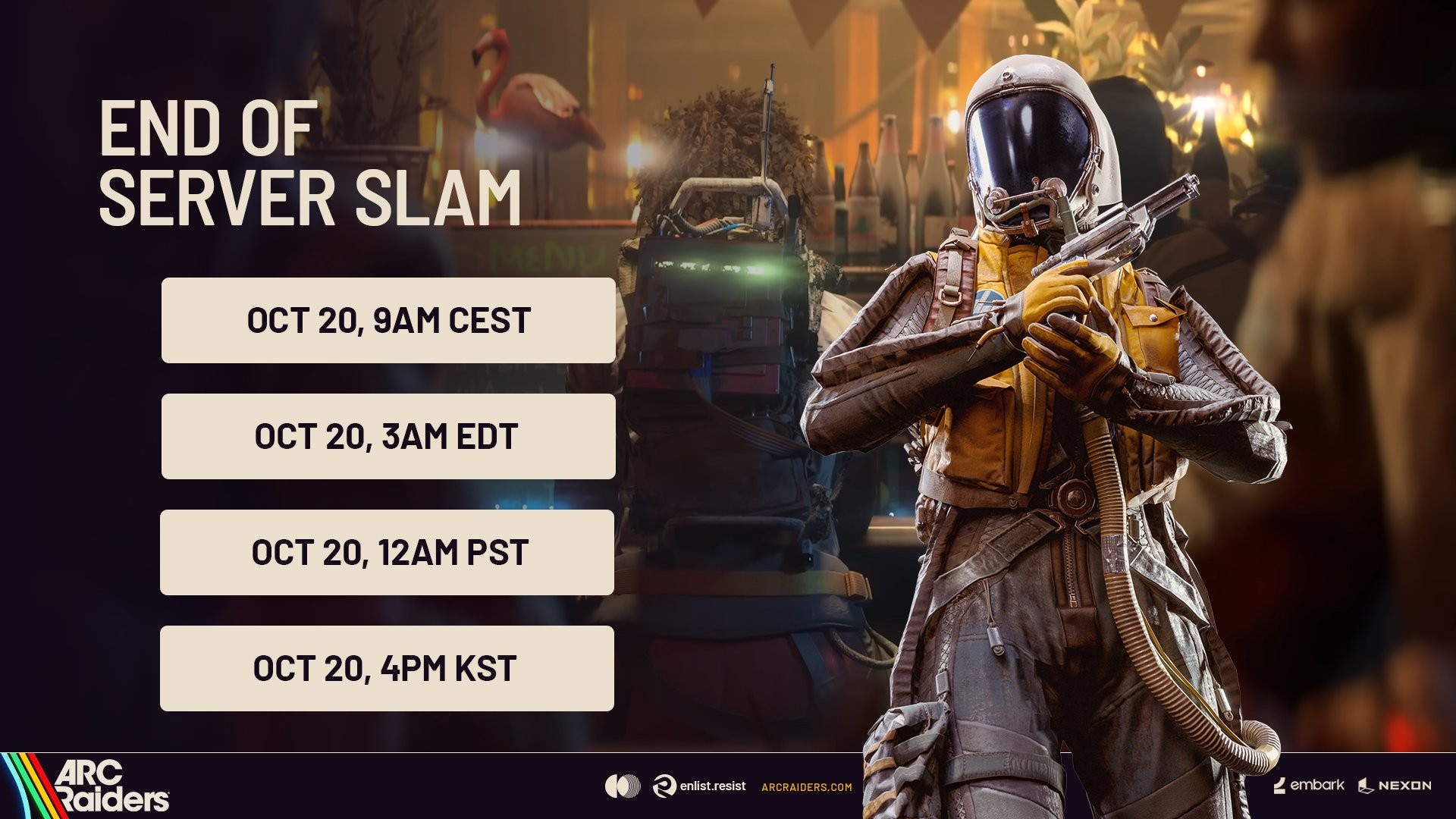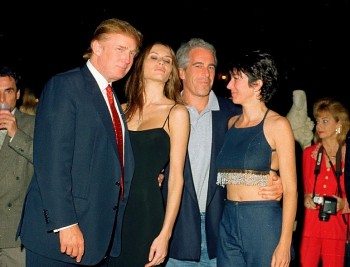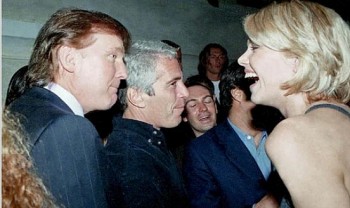Top 20 Most Famous & Handsome Cowboys of All Time
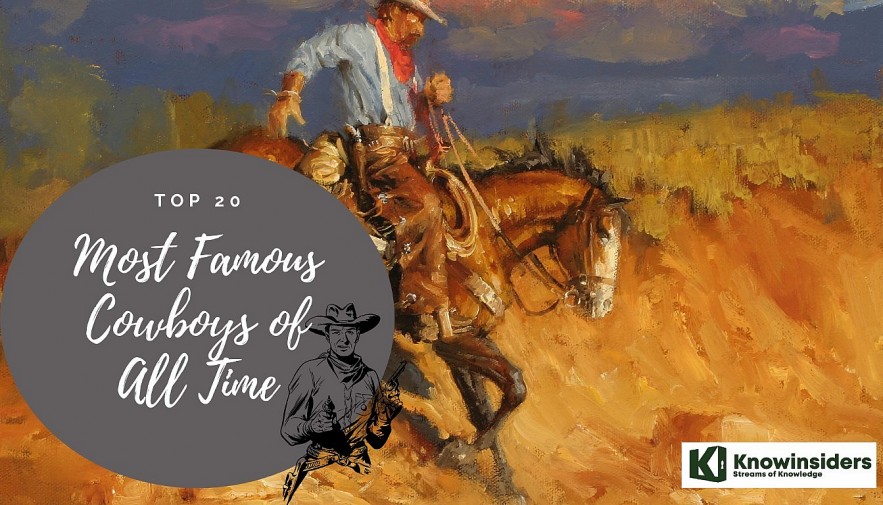 |
| Top 20 most famous and handsome cowboys of all time |
| Table Content |
Who are the Top Cowboys in the World?
This includes the most prominent cowboys, both living and dead, from America's wild west and around the world. This list of notable cowboys is organized by prominence and can be sorted by various criteria, such as where these historic cowboys were born and what their nationality is.
The people on this list come from various countries, but they all have one thing in common: they are all well-known cowboys. Continue reading to find out who they are.
Who are the Most Famous and Handsome Cowboys in American History
(Compiled and introduced by KnowInsiders)
20. Montie Montana (1910-1998)
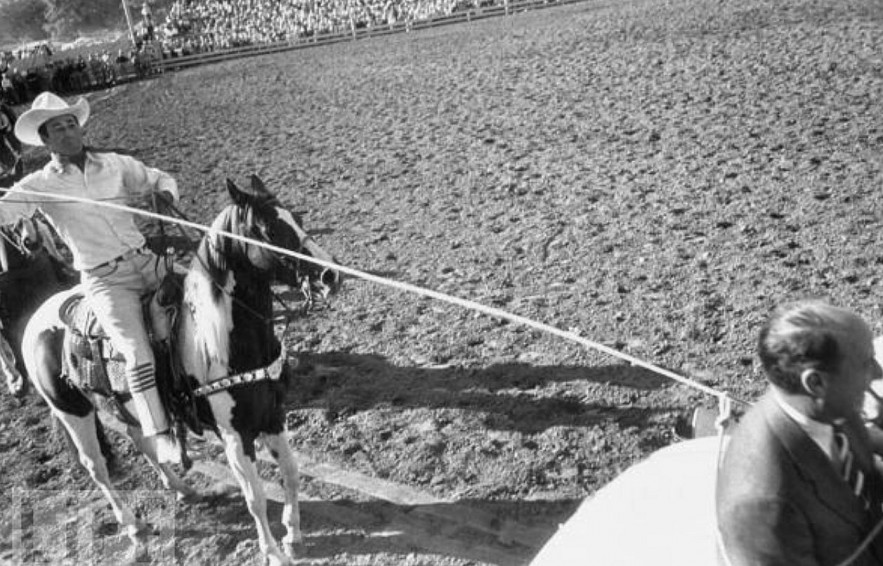 |
| Montie Montana |
Montie Montana (born Owen Harlen Mickel; June 21, 1910 – May 20, 1998) was an actor, stuntman, and cowboy who was inducted into the ProRodeo Hall of Fame in 1994.
Montana was born in 1910 in Wolf Point, Montana. He was a regular in the Tournament of Roses Parade until his death in 1998 in Los Angeles, California. More than 60 appearances on television have seen him waving to the crowd from his silver saddle. He and his horse Rex can be seen as contestants on the May 7, 1959 television broadcast of You Bet Your Life.
Montana would perform at elementary schools alongside Rex. In 1959, he was at Camellia Avenue Elementary School in North Hollywood, California, and he would talk about the rubber horseshoes Rex would be fitted with so he wouldn't slip on the asphalt playground while Montie was riding Rex. He did rope tricks on and off of Rex, and at the end of his show, he gave the students photos of him and Rex.
In 1996, he was honored with a Golden Palm Star on the Palm Springs Walk of Stars in California. He was laid to rest in Chatsworth, California's Oakwood Memorial Park.
19. Ab Saunders (1851-1883)
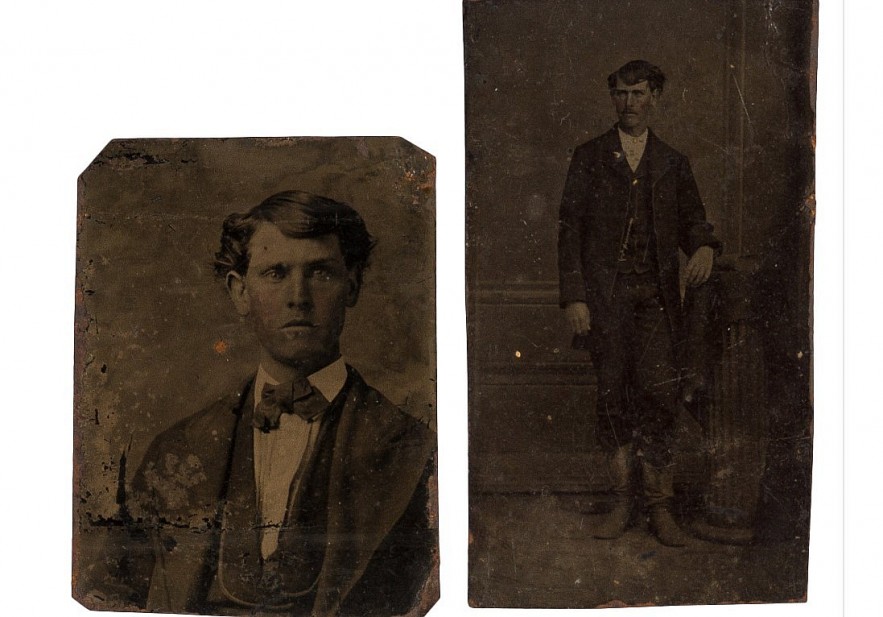 |
| Ab Saunders |
Ab Saunders (October 14, 1851 – February 5, 1883) was an American cowboy and at times gunman best known for his association with Billy the Kid, Charlie Bowdre, Frank McNab, Doc Scurlock, and Saunders' cousins Frank and George Coe during the 1878 Lincoln County War in the New Mexico Territory (New Mexico did not become a U.S. state until 1912).
Known as Ab by those who knew him, Saunders was born James Albert Saunders in Mount Pleasant, Iowa. After settling in Colfax County, New Mexico, Saunders joined the Coes around 1875. They all planned to settle and establish a ranch together. The corrupt Santa Fe Ring was in full swing at the time, and in Lincoln, New Mexico, businessman and former soldier Lawrence Murphy and his partner had a monopoly on business, charging ranchers and farmers exorbitant prices for their goods.
Saunders began helping his cousins on their ranch, defending the herds against cattle rustling. Saunders and his cousins met and became friends with Bowdre, Richard "Dick" Brewer, and Scurlock in the spring of 1876. In March 1876, Billy the Kid, also known as Henry Antrim or William H. Bonney at the time, began working at a cheese factory owned by Bowdre and Scurlock, where he met the Coe brothers and Saunders.
In July 1876, Frank Coe and Saunders pursued and killed cattle rustler Nicas Meras in the Baca Canyon. Bowdre, the Coe brothers, Saunders, and Scurlock broke into the Lincoln jail on July 18, 1876, freeing horse thief Jesus Largo from Sheriff Saturnino Baca. They then took Largo outside of town and executed him by hanging. When rancher Henry Hooker fired Bonney (Billy the Kid), he went to work as a cowboy for the Coes and Saunders.
Through ranching, Saunders and his cousins became acquainted with large rancher John Tunstall, who, with the backing of the powerful John Chisum, established a rival business to the Murphy enterprises in 1877, with partner Alexander McSween. This enraged Murphy and his partner, James Dolan, who hired members of the Jesse Evans Gang, the John Kinney Gang, and the Seven Rivers Warriors to provoke Tunstall into a fight. Tunstall, for his part, hired his own gunmen, including Bonney, Bowdre, Brewer, the Coe brothers, Saunders, and Scurlock. Jesse Evans and his gang murdered Tunstall on February 18, 1878, sparking the Lincoln County War.
Saunders moved to Colorado with the Coe brothers, then to San Francisco, California, to seek treatment for ongoing problems caused by the severe wound he received when McNab was killed. Saunders, on the other hand, died on February 5, 1883, while undergoing surgery, at the age of thirty-one.
In the 1958 episode "The Deserters" of the ABC/Warner Brothers western television series Colt.45, starring Wayde Preston, Michael Dante played Saunders. Guest stars include Angie Dickinson as Laura Meadows and Myron Healey as an unnamed fur trader.
18. Baxter Black (1945- )
Baxter Black (born January 10, 1945, Brooklyn Naval Hospital, Brooklyn, New York) is a cowboy poet and former large animal veterinarian from the United States.
Black was born in Las Cruces, New Mexico, and attended New Mexico State University. He graduated from Colorado State University's veterinary school in 1969. In the early 1980s, he began writing and speaking. He has published nearly three dozen books of poetry, fiction (both novels and children's literature), and commentary since leaving his veterinary career, selling over 2 million books, CDs, and DVDs.
He was a regular commentator on National Public Radio's Morning Edition from 2002 to 2009. The weekly syndicated radio program, Baxter Black on Monday, has been on the air since 1989, and his syndicated column, On the Edge of Common Sense, is carried by more than 150 publications.
He currently resides in Benson, Arizona, where he owns Coyote Cowboy Company, which publishes his works.
In January 1945, Black was born at the Brooklyn Naval Hospital in Brooklyn, New York. He was the Future Farmers of America (FFA) president, senior class president, and lettered in wrestling one year in high school. He began riding bulls in rodeos in high school and continued to do so throughout college. Black graduated from New Mexico State University and Colorado State University in 1969. Before becoming a poet, he worked as a veterinarian. This was a career that lasted from 1969 to 1982. He specialized in big animals like cows and horses. Baxter worked for three different large corporations, two of which changed hands. During his previous veterinarian job, Black rose to prominence through public speaking. He worked as a veterinarian for another two years and spoke at over 250 programs during that time. Following this, his career as a poet began. Baxter Black and Friends, a public television series, was also hosted by Black.
He still writes a column, speaks on the radio, and has a brief segment on RFD-TV and The Cowboy Channel. He and his wife, Cindy Lou, live in Benson, Arizona, and he doesn't have a cell phone, television, or fax machine. According to one of his life philosophies, "despite all of today's computerized, digitalized, high-tech innovations, there will always be a need for a cowboy." When asked what inspired him to become a cowboy, he responds, "Ya either are one, or you aren't!"
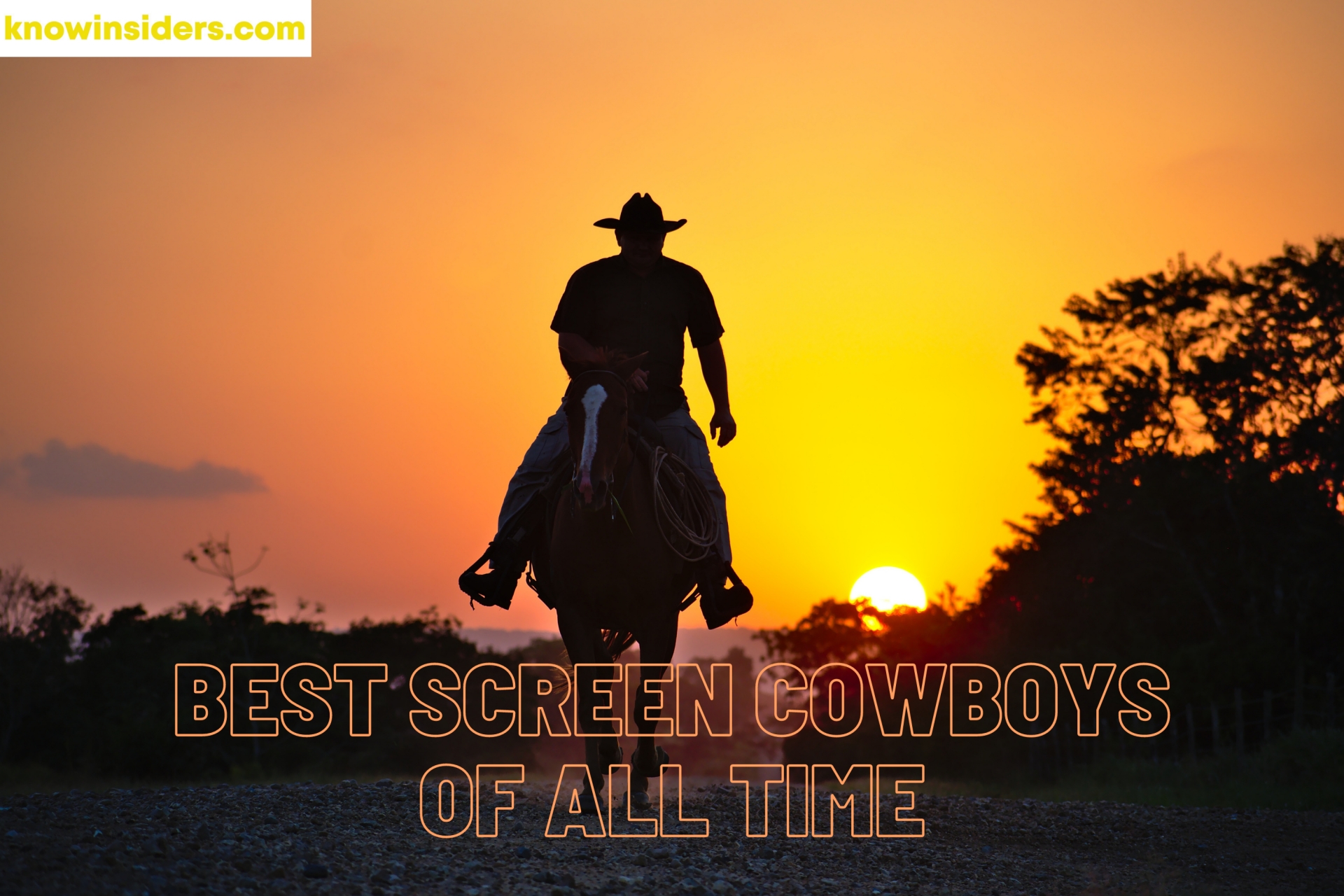 Top 10 Greatest Cowboys In Movie Of All Time Top 10 Greatest Cowboys In Movie Of All Time Who are the best cowboy characters in TV and movies? Let's find out. |
17. George Scarborough (1859-1900)
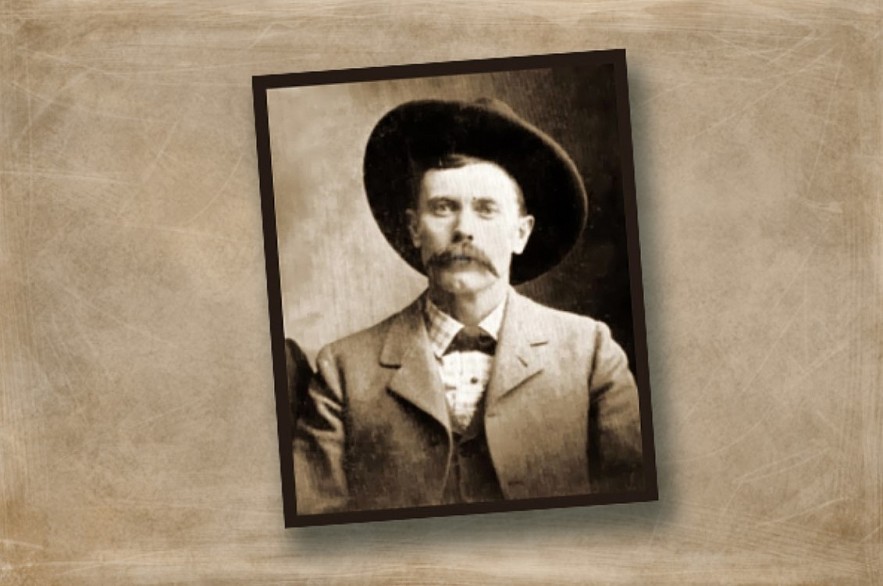 |
| George Scarborough |
George Scarborough (October 2, 1859 – April 5, 1900) was a cowboy and lawman during the Wild West era. He is best known for killing outlaw John Selman, the assassin of John Wesley Hardin, and for his collaboration with lawman Jeff Milton, with whom he brought down several outlaws during their time together.
Scarborough was born in the Louisiana parish of Natchitoches. His family relocated to Texas, where he worked as a cowboy for a time. He was appointed sheriff of Jones County in 1885. He later became a Deputy United States Marshal in and around El Paso, Texas. Scarborough shot and killed Martin M'Rose, a Texas rustler, on June 21, 1895, while working alongside El Paso police chief Jeff Milton. M'Rose is buried near Texas Ranger Ernest St. Leon and John Wesley Hardin. At the time, Jeff Milton was the Chief of Police in El Paso, and Scarborough was a US Marshal. M'Rose had been apprehended and killed by two lawmen on an outstanding warrant while being transported back from Mexico. John Wesley Hardin, an outlaw, gunman, and Mrs. M'Rose's paramour, claimed he paid Scarborough and Milton to assassinate Martin M'Rose. The men were arrested, but Hardin later withdrew his comments, and they were released.
Scarborough and Milton pursued, shot, and captured outlaw "Bronco Bill" Walters in July 1898, killing another member of Walters' gang and scattering the remainder from their hideout near Solomonville, Arizona. Scarborough pursued the Burt Alvord gang in late 1899 and early 1900. The gang's demise began on February 15, 1900, with a gunfight in Fairbank, Arizona, between five of its members and Jeff Milton, in which gang member "Three Fingered Jack" Dunlop was killed and both gang member Bravo Juan Yaos and Milton were wounded.
Scarborough was involved in a shootout with George Stevenson and James Brooks on April 1, 1900. He killed one of the men but was shot in the leg and returned to Deming, where his leg was amputated. He died four days later, six years to the day after his friend, Texas Ranger Bass Outlaw, died, and four years after he shot Outlaw's killer, John Selman.
16. Ben Johnson (1918-1996)
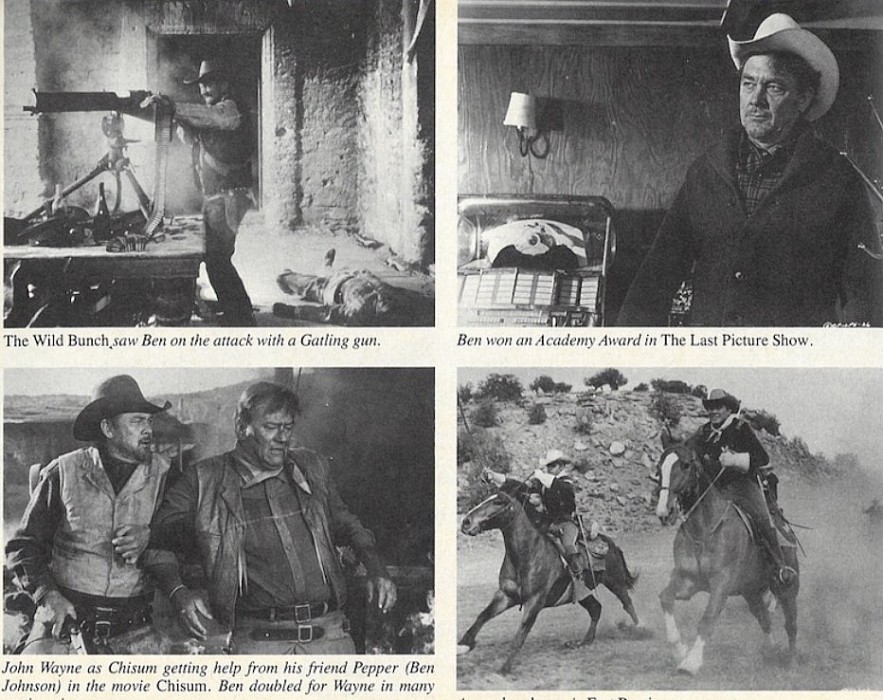 |
Benjamin "Son" Johnson, Jr. (June 13, 1918 – April 8, 1996) was a film and television actor, stuntman, and world-champion rodeo cowboy from the United States. Johnson, who was tall and laconic, brought authenticity to many Western roles with his expert horsemanship.
Johnson, the son of a rancher, arrived in Hollywood to deliver a shipment of horses for a film. For several years, he worked as a stunt double before breaking into acting with the help of John Ford. Johnson won the 1971 Academy Award, BAFTA Award, and Golden Globe Award for Best Supporting Actor for his elegiac portrayal of a former cowboy theater owner in the 1950s coming-of-age drama The Last Picture Show.
Throughout his career, Johnson also ran a horse breeding ranch. Despite his claim that he succeeded by sticking to what he knew, Johnson's real estate investments made him worth an estimated $100 million by his later years.
Johnson was drawn to rodeos and horse breeding during his childhood. He took a break from well-paid film work in 1953 to compete in the Professional Rodeo Cowboys Association (PRCA), becoming the Team Roping World Champion, despite only breaking even financially that year. In 1973, Johnson was inducted into the ProRodeo Hall of Fame. According to his ProRodeo Hall of Fame entry, he stated, "I've won a rodeo world championship, and that's something I'm prouder of than anything else I've ever done."
Johnson worked almost continuously until his death from a heart attack at the age of 77. On April 8, 1996, the veteran actor collapsed while visiting his then-96-year-old mother Ollie at Leisure World in Mesa, Arizona, a suburb of Phoenix where they both lived. Johnson's body was later transported from Arizona to Pawhuska, Oklahoma, where he was laid to rest in the Pawhuska City Cemetery.
15. Walt Garrison (1944- )
 |
| Walt Garrison |
Walt Garrison was a fullback for the Dallas Cowboys as well as a ProRodeo competitor. Garrison was born in Lewisville, Texas, and spent his childhood riding horses and steers. In high school, he competed in bareback riding, bull riding, calf roping, and steer wrestling.
Garrison attended Oklahoma State University on a scholarship and was a two-time All-Big Eight selection. He spent a year with the Oklahoma State rodeo team after completing his football eligibility. The Dallas Cowboys selected Garrison in the fifth round in 1966.
Garrison insisted on a two-horse trailer as part of his Cowboys signing bonus so he could continue to attend rodeos. Coach Tom Landry allowed Garrison to follow the rodeo trail in the offseason, which prevented him from competing in nearby rodeos the night before a game. Garrison's rodeo career high point was finishing fifth in the steer wrestling average at the 1974 Cheyenne (Wyo.) Frontier Days.
After a torn knee ligament ended his nine-year football career, the Texas cowboy was instrumental in the US Smokeless Tobacco sponsorship of ProRodeo and the programs they supported, including the livestock naming program, individual cowboy sponsorships, and college rodeo athlete scholarships.
14. Ty O’Neal McClary (1978- )
 |
| Ty O’Neal McClary |
Ty O'Neal McClary (born August 2, 1978) is an actor from the United States. He is best known for his roles in D2: The Mighty Ducks and D3: The Mighty Ducks as ice-skating cowboy Dwayne Robertson. While working on the films, McClary became close to Kenan Thompson. During filming, the two shared a residence. In 2001, he co-starred in American Outlaws with Colin Farrell, Scott Caan, and Gabriel Macht as real-life outlaw Clell Miller.
O'Neal is currently a member of the Professional Rodeo Cowboys Association. Team roping, calf roping, and steer wrestling are his events.
As a bull rider, he appeared in a popular Holiday Inn commercial.
In 2005, O'Neal married Christie. Christie McClary is a rodeo cowgirl who has previously modeled in catalogs for women's western wear. They moved to Sanger, Texas, to raise and train quarter horses. They occasionally travel on the Professional Rodeo Cowboys Association rodeo circuit, which includes O'Neal.
13. Emmett Dalton (1871-1937)
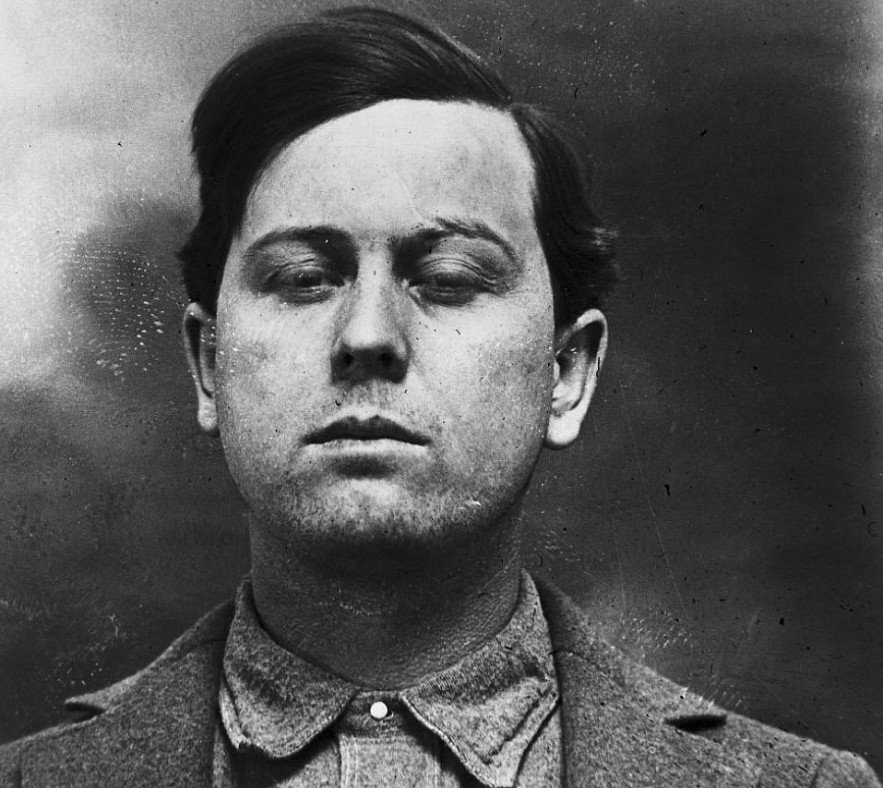 |
| Emmett Dalton |
Emmett Dalton was a member of the Dalton Gang in the American Old West and an outlaw in the United States (May 3, 1871 – July 13, 1937). He was one of five members of a gang that attempted to rob two banks in Coffeyville, Kansas, on October 5, 1892; he survived the attempt despite suffering 23 gunshot wounds. His two brothers were murdered. Dalton was pardoned after serving 14 years in prison for the offense.
He relocated to California, where he used his fame to publish books and break into the acting world of Hollywood. Beyond the Law, his first book, was made into a movie in which he also starred. When the Daltons Rode, his second book, was co-written with Jack Jungmeyer, Sr. and published in 1931. After Dalton's passing, the book was turned into the 1940 movie of the same name.
When their older brother Frank Dalton was killed in the line of duty, Bob and Grat Dalton shared the position he had held as US deputy marshals in Indian Territory. Emmett was hired to work as a guard at the jail in Fort Smith, which is located in modern-day Arkansas. The older two began helping the Osage Nation establish a police force, but they left after coming under suspicion for stealing horses.
They started carrying out robberies in trains, stagecoaches, and banks. They were joined by Emmett and two other men. The Dalton Gang was busted on October 5, 1892, when they tried to rob two banks in Coffeyville, Kansas, on the same day. They intended to earn enough money to leave the nation. During a gun battle with law enforcement and locals, four members of the gang were killed. Emmett Dalton was shot 23 times and suffered severe injuries, but he lived. He was tried, found guilty, and given a life sentence in the Kansas prison at Lansing. He received a pardon from the state governor after fourteen years.
In 1907, Dalton made a move to Southern California. The following year, he married Julia Johnson, who lived to see him through. He wrote two books and appeared in Hollywood during his time in California. Later, when Southern California was rapidly developing due to immigration from all over the country, he sold real estate. He passed away in 1937 at the age of 66.
In the 1918 motion picture adaptation of his first book, Beyond the Law, Dalton played himself. He co-authored the 1931 book When the Daltons Rode with Los Angeles journalist Jack Jungmeyer, Sr. It was turned into the same-named 1940 motion picture. Randolph Scott, Kay Francis, and Brian Donlevy acted in it. Frank Albertson portrayed Emmett Dalton.
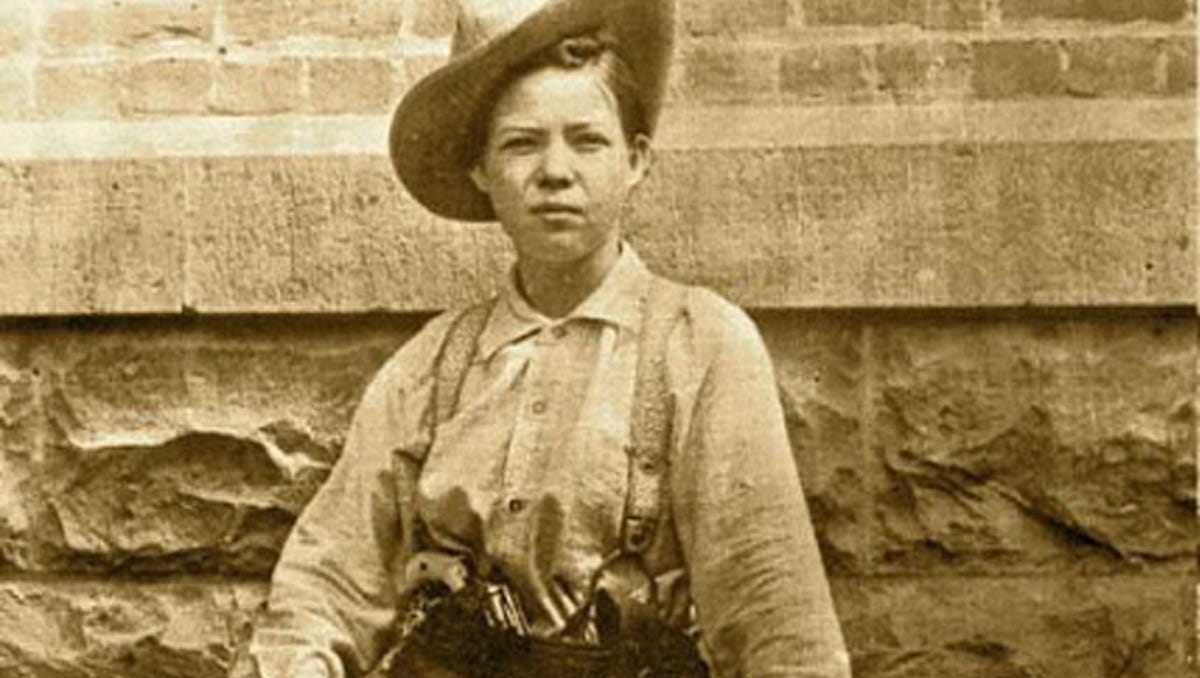 Top 10 Most Notorious Women of The Wild West Top 10 Most Notorious Women of The Wild West Most of the time, when we think about the Wild Wild West, we think of cowboys and bandits and corrupt sheriffs. But some of the ... |
12. Bill Pickett (1870-1932)
Willie M. "Bill" Pickett was a cowboy, rodeo, Wild West show performer, and actor (he died on April 2, 1932). Pickett was admitted to the ProRodeo Hall of Fame in 1989.
In 1870, Pickett was created in the Jenks Branch neighborhood of Williamson County, Texas. Five miles southeast of Liberty Hill and close to the Travis County border, in western Williamson County, is Jenks Branch, also referred to as the Miller Community. He was the second child to be born to Mary "Janie" Gilbert and former slave Thomas Jefferson Pickett. Pickett had eight sisters and four brothers. The ancestors of the family were both Cherokee and African-American. The family relocated to Taylor, Texas, by 1888.
Maggie Turner, a former slave and the daughter of a white southern plantation owner, was married to Pickett in 1890. The couple had nine kids together.
He created the art of bulldogging, or the ability to wrestle cattle to the ground by grabbing them by the horns. It was common knowledge among cattlemen that a stray steer could be captured with the aid of a skilled bulldog. Bill Pickett had witnessed this happening numerous times. He also reasoned that he could accomplish this feat if a bulldog could. In order to perfect his trick, Pickett rode hard, jumped off his horse, and wrestled the steer to the ground. Bulldogging was Pickett's technique, which involved biting a cow on the lip before reversing direction. Additionally, he assisted cowboys in bulldogging. This approach eventually fell out of favor as the activity evolved into the steer wrestling that is now performed at rodeos.
At nearby country fairs, Pickett quickly gained a reputation for his stunts and tricks. He founded The Pickett Brothers Bronco Busters and Rough Riders Association with his four brothers. Bill Pickett's name quickly came to represent successful rodeos. He traveled around in Texas, Arizona, Wyoming, and Oklahoma while performing his bulldogging act.
After quitting Wild West shows in 1932, Bill Pickett was kicked in the head by a bronco, passing away on April 2, 1932, and was buried on the 101 Ranch. On Monument Hill, also known to the locals as the White Eagle Monument, less than a quarter of a mile northeast of Marland, Oklahoma, he is interred close to a 15-foot stone memorial commemorating the friendship of Ponca Tribal Chief White Eagle and the Miller Brothers.
11. Chuck Roberson (1919-1988)
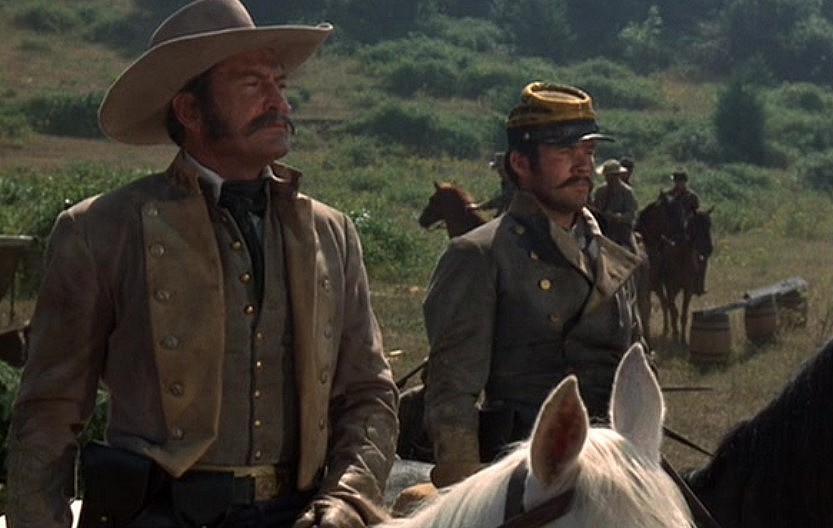 |
| Chuck Roberson |
American actor and stuntman Charles Hugh "Chuck" Roberson was born on May 10, 1919, and passed away on June 8, 1988. To distinguish him from stuntman Chuck Hayward, known as "Good Chuck," he was given the moniker "Bad Chuck" by director John Ford, for whom he frequently worked. The nicknames came about because Roberson was allegedly the rowdier of the two.
The son of farmer Ollie W. Roberson and Jannie Hamm, Roberson was born close to Shannon, Texas. He was raised on cattle ranches in Roswell, New Mexico, and Shannon, Texas, and dropped out of school at the age of 13 to work as an oilfield roughneck and cowhand. He got married, moved to California with his wife and daughter, joined the Culver City Police Department, and was a gate guard at the MGM Studios. After serving in the army during World War II, he joined the police department once more. He met stuntman Guy Teague while on duty at the Warner Bros. studios during a labor strike, and Teague told him about a stunt job at Republic Pictures. Teague was able to teach him the ropes because he had worked as John Wayne's stunt double for a long time. Chuck also shared similarities with John Carrol, who Roberson played as a double in his debut film Wyoming (1947). In the same movie, he played supporting roles with stunt doubles. He advanced to more significant supporting roles in westerns starring John Ford and John Wayne, as well as to a parallel career as a second-unit director.
The Lone Ranger, The Adventures of Kit Carson, Lawman, Death Valley Days, Have Gun - Will Travel, Laramie, Gunsmoke, The Virginian, Laredo, Bonanza, Daniel Boone, and The Big Valley are just a few of the television shows in which he has appeared. Roberson also made an appearance in the Disney television Westerns Texas John Slaughter and The Swamp Fox. The Wonderful World of Color included them. He played a Confederate Prison Captain in The Great Locomotive Chase before that.
10. Tom Ketchum (1863-1901)
American cowboy Thomas Edward Ketchum (also known as Black Jack; born October 31, 1863, died April 26, 1901) later turned into an outlaw. In 1901, he was put to death for attempting to rob a train.
In Texas's San Saba County, Tom Ketchum was born. He may have fled Texas after committing a crime in 1890. By 1894, his older brother, Sam Ketchum, had joined him in the Pecos River Valley of New Mexico, where he was employed as a cowboy.[1] In 1892, a large payroll was aboard an Atchison, Topeka and Santa Fe Railway train that was traveling to Deming, New Mexico Territory. Black Jack and a group of other individuals were identified as the train's robbers. Twenty miles north of Deming, at a water station outside of Nutt, New Mexico Territory, the gang allegedly robbed a train. The ranch of Herb Bassett, close to Brown's Park, Colorado, was frequented by Black Jack and his gang. Herb Bassett was known to have transacted business with several outlaws of the era, providing them with beef and new horses. Female outlaws Josie Bassett and Ann Bassett, who were the girlfriends of several members of Butch Cassidy's Wild Bunch gang, were raised by their father, Herb Bassett. Ben Kilpatrick, a future member of the Wild Bunch gang and one of Ann Bassett's boyfriends, started riding with Black Jack's crew around that time. It is also thought that at this time, outlaw "Bronco Bill" Walters, later famous for the rumor of his "hidden loot" near Solomonville, Arizona, started riding with the gang.
Black Jack's gang included the outlaw Harvey "Kid Curry" Logan and his brother Lonnie Curry by the end of 1895. The Currys left the gang, however, in the early months of 1896 due to a disagreement over their portion of the stolen goods.
Once Tom Ketchum was mistaken for another outlaw named "Black Jack" Christian, earning him the moniker. The same area, between Folsom and Des Moines in New Mexico Territory, was the scene of three of the gang's train robberies. This occurred close to Twin Mountain where the Colorado and Southern Rail Road tracks crossed the old Fort Union wagon road.
Tom Ketchum, who claimed to be unaware of the July 11 robbery that left his brother Sam dead, attempted to rob the same train alone on August 16 in the same location and manner as he and Sam and others had done just a few weeks earlier. Frank Harrington, the train's conductor, noticed Tom en route to the moving train. He spotted him, reached for a shotgun, and shot Tom in the arm, dismounting him. The train kept going, and the following day a posse arrived and discovered Tom beside the tracks, seriously injured. His right arm had to be amputated after he was taken to a hospital in Trinidad, Colorado. After being restored to health, he was transported to Clayton, New Mexico Territory, for his trial.
Ketchum was found guilty and given the death penalty at the trial. In what is now Union County, New Mexico, he was the only person to have ever been hanged. He was also the sole recipient of the death penalty for the crime of "felonious assault upon a railway train" in the territory of New Mexico (which did not become a state until 1912). The law was later determined to be unconstitutional.
The San Francisco Chronicle reported that he said, "Good-bye. Please make my grave a deep one. All right, move quickly.
The body was depicted on a widely distributed postcard. He was then laid to rest at the Clayton Cemetery after having his head reattached to the body for viewing.
9. Doc Scurlock (1849-1929)
Josiah Gordon "Doc" Scurlock, a cowboy and gunfighter in the American Old West, lived from January 11, 1849, to July 25, 1929. Scurlock rode with men like Billy the Kid during the Lincoln County War in New Mexico as a founding member of the Regulators.
He was the sixth of 11 children born to Priestly Norman Scurlock (July 3, 1806 - June 22, 1876) and Esther Ann Brown (May 19, 1819 - June 1, 1903) in Tallapoosa County, Alabama, on January 11, 1849. Josiah was given the moniker "Doc" because it was claimed that he studied medicine in New Orleans.
Doc traveled to Mexico in or around 1870. He was described as being 5 feet 8 inches (1.73 m) tall, 150 pounds (68 kg), with brown eyes, and dark blond hair. He and another man got into a fight over a card game there and pulled their guns. The other man fired first, and the bullet passed through Doc's mouth, dislodging his front teeth before exiting his neck without doing any more significant harm. He was shot, but he quickly returned fire and killed the shooter.
Sheriff William J. Brady detained Scurlock and a neighbor named George Coe in January 1877 on charges that they had been harboring Frank Freeman, a murderous fugitive and member of the Jesse Evans Gang. Brady treated Scurlock and Coe incredibly harshly for the following few days. They allegedly underwent torture but were eventually freed. Richard "Dick" Brewer, Alexander McSween, and John Tunstall's horses were taken by the Evans Gang from Brewer's Rio Ruidoso ranch in October 1877. Brewer, Scurlock, and Bowdre set out to track down the Evans Gang; they succeeded in doing so, but were unable to get their hands back on the horses that had been taken.
Sheriff John Copeland, a supporter of McSween who succeeded Sheriff Brady, hired Scurlock as a deputy. He led a group of 18 to 20 men, including Billy the Kid, Bowdre, George Coe, Brown, and Scroggins, to the Dolan-Riley cattle ranch on May 14, 1878, ostensibly in search of those responsible for MacNab's murder and Saunders' injury. Riley claims that they killed a 15-year-old boy named Johnny, a Navajo Indian working as the ranch's cook, and 26 horses and two mules in addition to a herder named Wair. The latter two were only hurt, according to W.T. Thornton, Thomas B. Catron's law partner. According to author Robert M. Utley, they shot "Indian" Manuel Segovia while he was allegedly trying to flee after they had captured him as the person who shot McNab.
Scurlock relocated to Texas in about October or November 1879, where he settled down and developed into a highly regarded citizen. He was still operating the mail station in Potter County, Texas, according to the 1880 census.
At the age of 80, Doc Scurlock passed away in Eastland, Texas, from a heart attack. Along with his wife and other family members, he is buried in the Eastland City Cemetery.
8. Hank Worden (1901-1992)
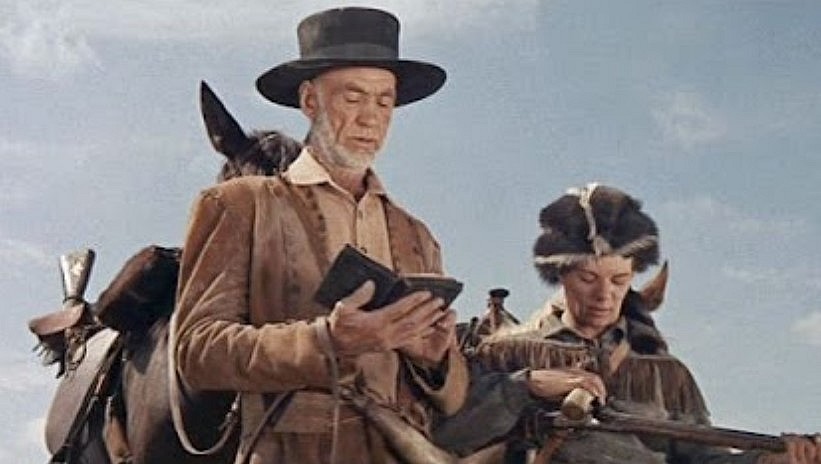 |
American cowboy-turned-character actor Hank Worden (born Norton Earl Worden; July 23, 1901–December 6, 1992) starred in a number of John Ford Westerns, including The Searchers and The Lone Ranger television series.
A Rolfe, Iowa, native, Worden received his engineering education at the University of Nevada and Stanford University after growing up on a cattle ranch close to Glendive, Montana. He joined the American Army in the hopes of becoming an Army pilot, but he failed flight school. He was a skilled rider of horses and competed in rodeos across the nation on the saddle bronc. Worden's neck was fractured during one ride when his horse fell on top of him, but aside from a brief soreness, he was unaware of the extent of the injury until an x-ray was taken 20 years later.[Reference needed] He and fellow cowboy Tex Ritter were chosen to perform in the Broadway play Green Grow the Lilacs (1931) while competing in a rodeo at Madison Square Garden in New York. After the play's run, Worden worked as a cab driver in New York before getting jobs as a wrangler on dude ranches and a guide on the Grand Canyon's Bright Angel trail.
Actress Billie Burke met him by chance at a dude ranch and ended up recommending him to several movie producers. Although a few later films had already been released before The Plainsman, Worden made his acting debut as an extra in Cecil B. DeMille's The Plainsman. At this point, Tex Ritter was already a well-known actor, and Worden appeared as Ritter's sidekick in several of his Western movies. Before using his real name again, Worden was billed as "Heber Snow" in a number of his early appearances. In addition to recommending him to John Ford, Howard Hawks recommended him for a number of later roles after he played a small part in Come and Get It. He made an appearance in six episodes of The Lone Ranger.
With the director Clyde Lucas, Worden hosted and co-produced the independent special Thank Ya, Thank Ya Kindly, which aired on the Nostalgia Channel and some PBS stations in 1992. Clint Eastwood, Paul Hogan, Harry Carey Jr., Ben Johnson, Frankie Avalon, Burt Kennedy, and stuntman Dean Smith were among the guests for the retrospective on Worden's career.
He shared his home for a while with actor Jim Beaver after becoming widowed in 1977 by his wife of 37 years (the former Emma Louise Eaton). He was healthy until he was 91 years old and passed away on December 6, 1992, while taking a nap at home in Los Angeles. He was survived by Dawn Henry, the daughter he and his wife had adopted when she was an adult.
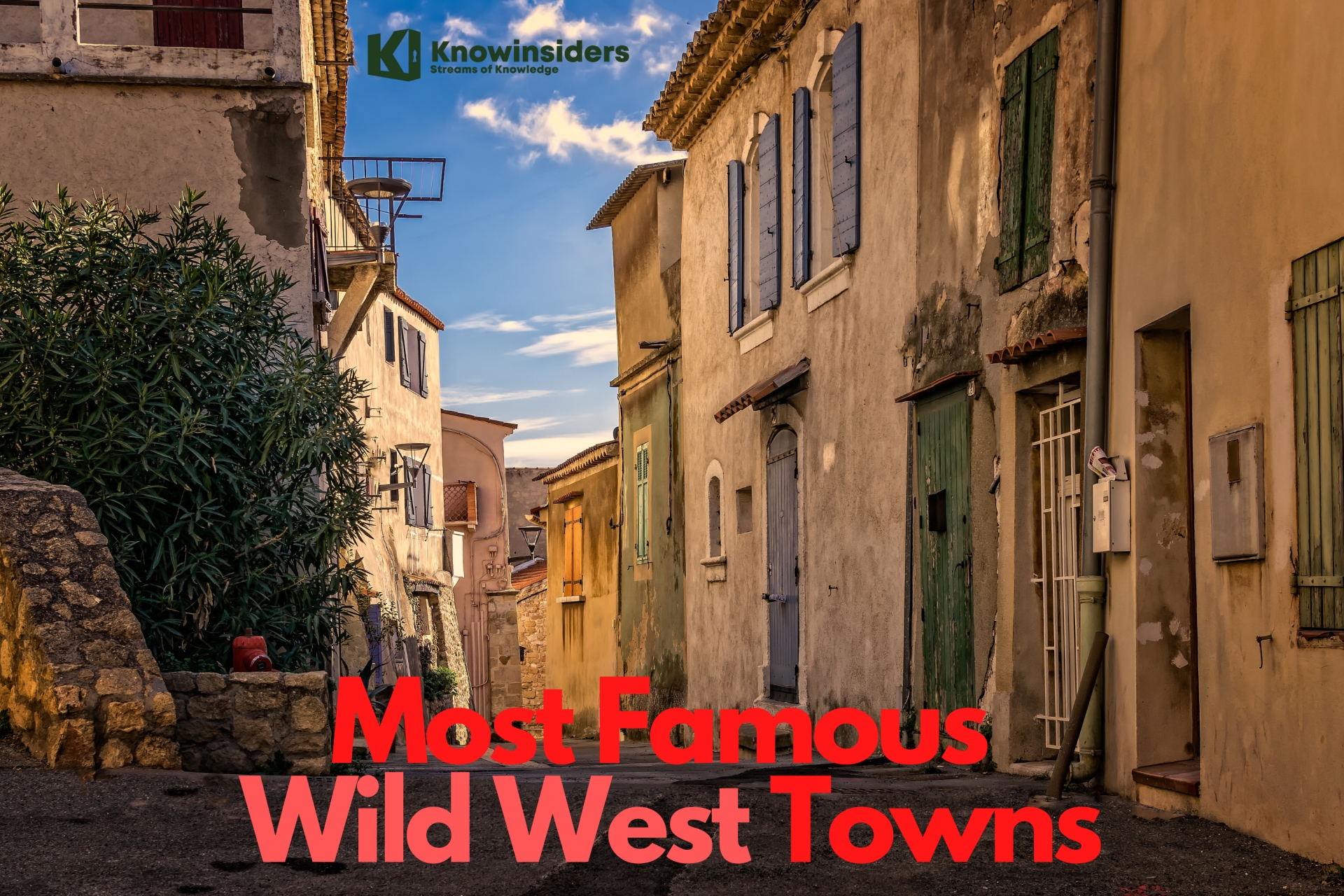 Top 10 Most Famous ‘Wild West’ Towns In America Top 10 Most Famous ‘Wild West’ Towns In America There are 'Wild West' towns in the US where you can play outlaw. Let’s explore what they are. |
7. Cliven Bundy (1946- )
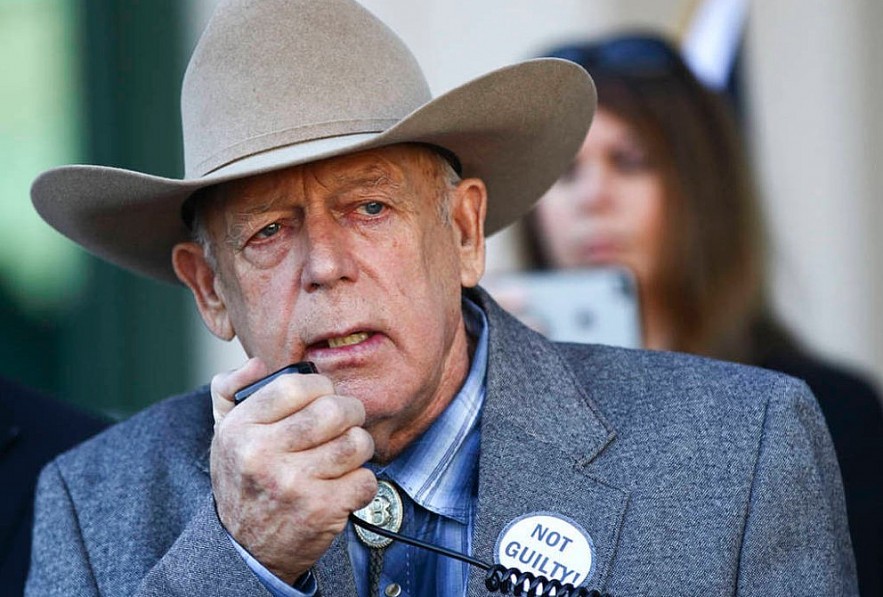 |
| Cliven Bundy |
American cattle rancher Cliven D. Bundy (born April 29, 1946) was charged with a crime and imprisoned pending trial for his involvement in the 2014 Bundy standoff.[2] Bundy vehemently defended a philosophy that he considered to be federal government overreach. He is the father of Ammon Bundy, who in 2016 oversaw the occupation of the Malheur National Wildlife Refuge in Oregon, which involved another armed standoff with the authorities.
In 2014, Bundy started an armed standoff with federal and local law enforcement in Nevada over unpaid grazing fees. Cliven Bundy was detained by the Federal Bureau of Investigation (FBI) on February 10, 2016, at the Portland International Airport while en route to assist with the Malheur Standoff. Due to federal charges stemming from his own standoff with the Bureau of Land Management in 2014, he was taken into custody by the government. Judge Gloria Navarro dismissed the charges on December 20, 2017, declaring a mistrial because the federal government had withheld potentially favorable evidence.
Bundy has been a part of and maintained relationships with a number of related movements, such as anti-government activism, which favors state and local governments over the federal government, and the sovereign citizen movement, which maintains that people are only accountable to their own interpretation of the common law and are not subject to any laws or legal processes imposed by the government. Some see him as a hero for organizing a group of ranchers to persuade other ranchers to follow suit and stop paying the grazing fees required by their federal grazing contracts. Bundy's opinions have also sparked a great deal of debate and criticism. For example, he received backlash for comments that implied African Americans might have fared better in slavery than in a society supported by the government.
6. Ty Murray (1969- )
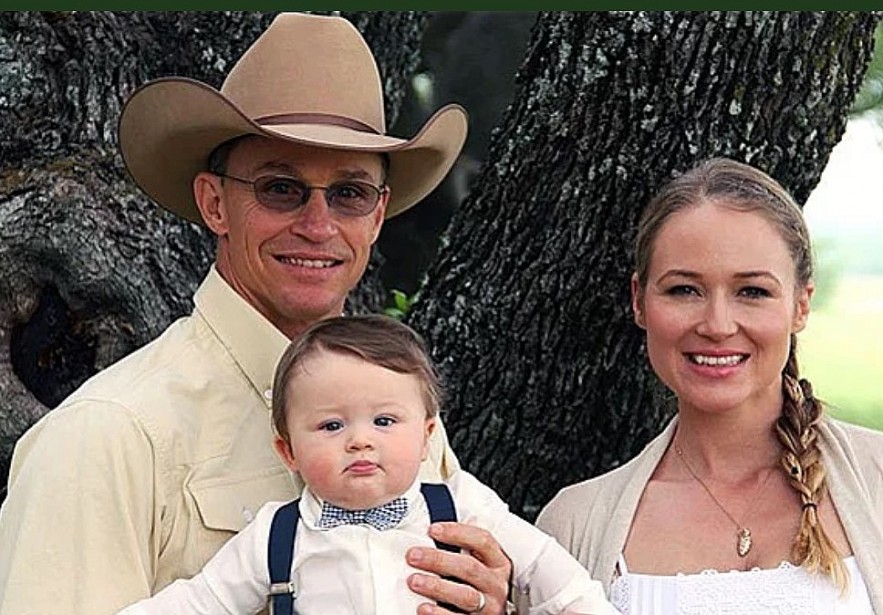 |
| Ty Murray |
American professional rodeo cowboy Ty Monroe Murray (born October 11, 1969) has won nine World Championships. From the late 1980s to the early 2000s, he was one of the best rodeo competitors in the world. In the all-around category, he was inducted into the ProRodeo Hall of Fame in Colorado Springs. In addition, he serves as a board adviser and one of the co-founders of the Professional Bull Riders (PBR), as well as a color analyst for the PBR's premier tour, the Unleash the Beast Series (UTB).
Ty Murray was born to Harold "Butch" and Joy Murray on October 11, 1969 in Phoenix, Arizona. His two sisters, Kim and Kerri, were both active in rodeo when they were young. His father broke colts for 30 years, participated in rodeos, and served as the starter for The Downs in Albuquerque, New Mexico. His mother participated in National Little Britches Rodeo Association competitions as a youngster. In their bull riding competition, she came in first. But before long, the family relocated to a ranch in Glendale, Arizona, about 10 miles from Phoenix.
He won the all-around title in the 1987 Arizona National High School Rodeo Association competition. He shared first place in the bareback riding competition with Dennis Schmidt. Arizona, which had not done so in 12 years, used this to help them win the team national championship. He participated in all roughstock and cutting competitions. He also took home the all-around title from the National High School Rodeo Association.
He again participated in PRCA competitions in 1989. This time, he achieved NFR qualification in both saddle bronc and bareback riding. The only other two cowboys that year to qualify for more than one event were him and his uncle Butch Myers. That year, the all-around was a friendly competition between the nephew and the uncle. Murray trailed Myers by $2,786 going into the championship round. On 7 of his 20 horses, Murray finished in the top 3, earning $58,031 in his debut NFR. Myers was outdone by $21,202 by him. In that year, Murray won the all-around title at a young age. Jim Shoulders had previously held that position after winning in 1949 at the age of 21.
Murray qualified his ride on Fresh Country for 86.50 points in January in Bossier City, Louisiana, while the bull scored 44.75 points. Murray qualified his ride on Smokin' Smurf for 90.50 points in Greensboro, North Carolina, also in January. It scored 44.50 for the bull. Murray earned a qualified ride on Perfect Storm for 95 points in Greensboro in January as well; the bull scored 47 points. In Oklahoma City, Oklahoma, in August 2001, he had previously ridden the bull. He completed a qualifying ride on Starbucks for 89 points in February in Guthrie, Oklahoma; the bull earned 44.000 points. He qualified on 6 Lefty for 89.50 points in Guthrie in February as well. The bull earned 44.00 points. Murray had a shot at the future Brand of Honor bull Mossy Oak Mudslinger in March in Albuquerque, New Mexico. He was knocked off by the bull, who scored 47 points.
5. John Wesley Hardin
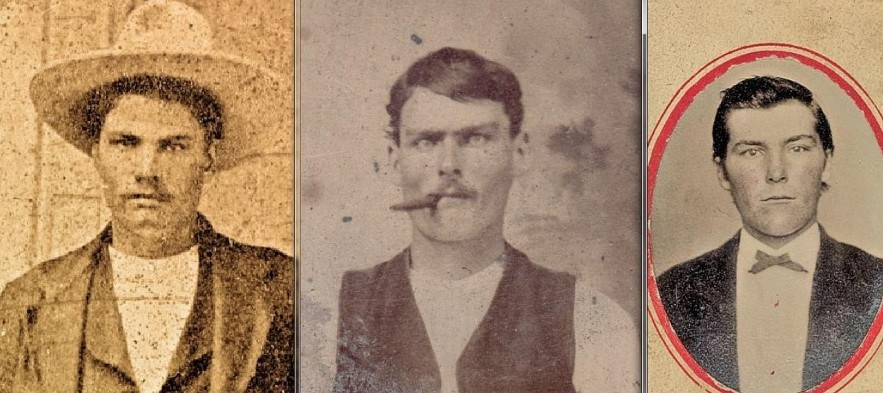 |
| John Wesley Hardin |
John Wesley Hardin, an American Old West outlaw, gunfighter, and divisive folk hero, lived from May 26, 1853, to August 19, 1895. Hardin was frequently in legal trouble since a young age. At the age of 15, he claimed to have killed his first man in self-defense.
He spent the majority of his life being hunted by law enforcement, and in 1877, when he was only 23 years old, he was found guilty of murder and given a 24 year prison term. Hardin claimed to have killed 42 men at the time of his sentencing, but reports in recent newspapers place the death toll at 27. Hardin wrote an autobiography and studied law while he was incarcerated. He was well known for making up or embellishing tales about his life and claiming responsibility for numerous murders that couldn't be verified.
Hardin was murdered by John Selman in an El Paso saloon less than a year after his release from prison in 1894.
Hardin was born in 1853 not far from Bonham, Texas, to Methodist preacher and circuit rider James "Gip" Hardin and Mary Elizabeth Dixson. He was given the name John Wesley in honor of John Wesley, who established the Methodist branch of the Christian church. Hardin characterized his mother in his autobiography as "blond, highly cultured... [while] charity predominated in her disposition." Before settling his family in Sumpter, Trinity County, Texas, in 1859, Hardin's father conducted his preaching ministry over a large portion of central Texas. John Hardin and his siblings attended the school that Hardin's father founded and taught at there. Of ten children, Hardin was the second son to survive.
First killing
When Hardin was 15 years old, he challenged Major "Maje" Holshousen, his uncle Holshousen's former slave, to a wrestling match, which Hardin won. The next day, Maje "ambushed" him as he rode past, shouting at him and brandishing a stick, according to Hardin. Maje was shot five times by Hardin after drawing his revolver. In his autobiography, Hardin stated that he rode to bring the injured man aid, but Maje passed away three days later. According to Hardin, his father ordered him into hiding because he didn't think he would get a fair trial in the Union-occupied state, where more than a third of the state police were former slaves. When three Union soldiers were dispatched to apprehend him after the authorities eventually found him, according to Hardin, he "chose to confront his pursuers" despite having been warned of their approach by his older brother, Joseph:
"I waylaid them because I had no mercy for men who I knew only wanted my body so they could torture and murder me," he continued. I started the fight with a double-barreled shotgun and finished it with a cap-and-ball six-shooter, so it was war to the knife for me. I had thus killed four men by the fall of 1868 while also suffering an arm injury.
4. Don Bendell
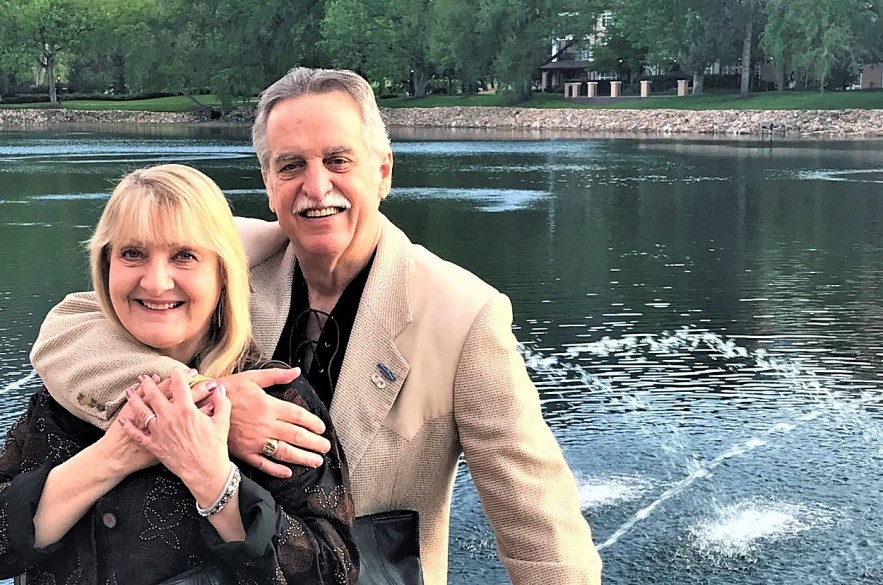 |
| Don Bendell |
Don Bendell, an American author, rancher, tracker, producer, director, actor, and former Green Beret, was born on January 8, 1947. He has written 29 books and helped disprove former mayor of Atlantic City Bob Levy's claims that he was a Green Beret.
Ohio native Bendell was born in Akron, and The American Spectator is just one of the publications that have featured his writing. In 1995, Bendell was inducted into the International Karate & Kickboxing Hall of Fame. He is skilled in several martial arts and has owned his own karate schools in the past.
Bendell gave a speech in support of Republican Donald Trump at a rally in November 2016.
In the 2018 Colorado House of Representatives race, Republican candidate Bendell was narrowly defeated by Democrat Brianna Buentello.
3. Clay Carr (1909-1957)
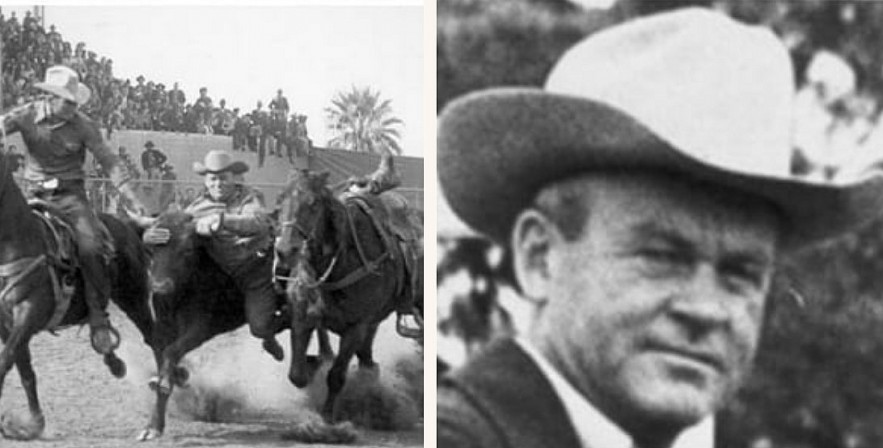 |
| Roper and bulldogger, Clay Carr was born in 1909 at Farmersville, California |
In the 1930s and 1940s, Clay Carr, an American rodeo cowboy (April 17, 1909 – April 1957), competed. He won three season discipline titles, including two in steer roping and one in saddle bronc riding, and was a two-time All-Around Cowboy champion in the Rodeo Association of America (RAA). He became the first rodeo competitor to win the Triple Crown in 1930 by winning the All-Around Cowboy title as well as two season discipline championships. The current Professional Rodeo Cowboys Association (PRCA) honors Carr's victories.
California's Farmersville is where Carr was born. Being raised on a cattle ranch, he learned to ride horses at the age of four and developed additional rodeo-related skills throughout his youth. He once received a rattlesnake bite to the leg while riding a horse, and it took him a week of medical care to recover.
He resided in Visalia throughout his working life. Carr won two season discipline championships in the saddle bronc and steer roping divisions in 1930, along with the RAA All-Around Cowboy title. Carr earned the first-ever Triple Crown in rodeo with the help of the three victories in a single season. He is one of only 10 cowboys to have achieved the feat as of 2015. In 1933, Carr won his second All-Around Cowboy championship; two years later, he was gored by a bull at a rodeo in Visalia and sustained an abdominal perforation. Carr came in second place to Lonnie Rooney in the combined bronc riding and calf roping standings of the 1936 Chicago rodeo. He added a second steer roping title in 1940. In addition, Carr won the California Rodeo three times, and he also acted in Western movies.
Susan Davis of Sports Illustrated referred to Carr as "the Babe Ruth of rodeo riders". He was referred to as "one of the great cowboys of the age" by author Clifford P. Westermeier, who also described him as "a strange man, difficult to meet and extremely hard to get acquainted with." Carr was nevertheless well-known in the rodeo community; according to Westermeier, he was "regarded as a very tough customer in a business deal, fight, or a poker game." Although he occasionally competed on the East Coast and occasionally competed in rodeos abroad, Carr was thought to be strongest in competitions held in the western United States. Carr was inducted into the Rodeo Hall of Fame at the National Cowboy and Western Heritage Museum in 1955. The ProRodeo Hall of Fame and the California Rodeo Salinas Hall of Fame both inducted him in 1979 and 2016, respectively.
2. Will Rogers (1879-1935)
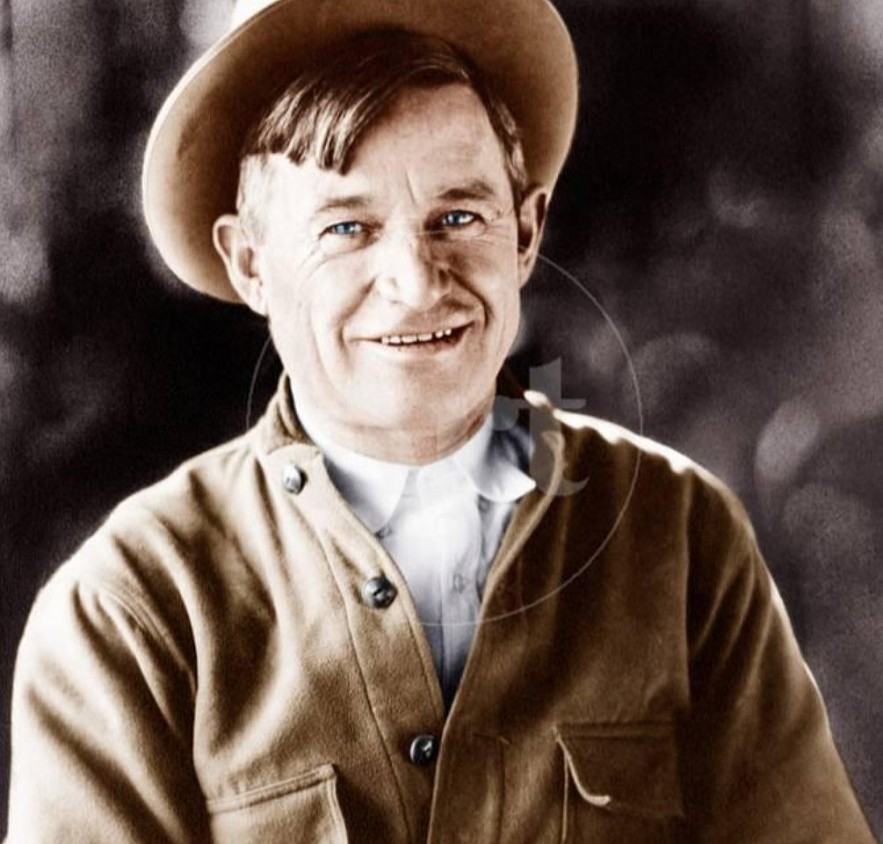 |
| Will Rogers |
William Penn Adair Rogers was an American stage and film actor, vaudeville performer, cowboy, humorist, newspaper columnist, and social commentator from Oklahoma who lived from November 4, 1879 to August 15, 1935. He was a Cherokee citizen who was born in Indian Territory's Cherokee Nation.
"Oklahoma's Favorite Son" Rogers was born to a Cherokee family in Indian Territory, which is now a part of Oklahoma. He made over 4,000 nationally syndicated newspaper columns, 71 films (50 silent and 21 "talkies"), and three trips around the globe as an entertainer and humorist.
By the middle of the 1930s, Rogers was the highest-paid Hollywood film star and enjoyed enormous popularity in the United States for his sharp political wit. In 1935, he and pilot Wiley Post perished in a small plane crash in northern Alaska.
Success in the Ziegfeld Follies as a result of Rogers' vaudeville rope act led to the first of his numerous movie contracts. His fame and popularity grew thanks to his radio appearances and syndicated newspaper column in the 1920s. Rogers advocated for the development of aviation and gave Americans firsthand accounts of his global travels. He was able to make fun of gangsters, prohibition, politicians, government initiatives, and a wide range of other contentious subjects with ease and without offending anyone thanks to his earthy anecdotes and folksy style. He frequently uttered witty aphorisms like, "I am not a member of an organized political party. I support Democrats.
Will Rogers in the 1932 movie Down to Earth, according to The Film Daily
"I never met a man I didn't like" was one of Rogers' most well-known quotes, and he even offered an epigram on it:
I joked about every notable man of my time, but I never met a man I didn't like, will be my epitaph, or whatever you call those signs on gravestones, when I pass away. I can hardly wait to pass away so that it can be carved because I am so proud of that.
1. Billy the Kid (1859-1881)
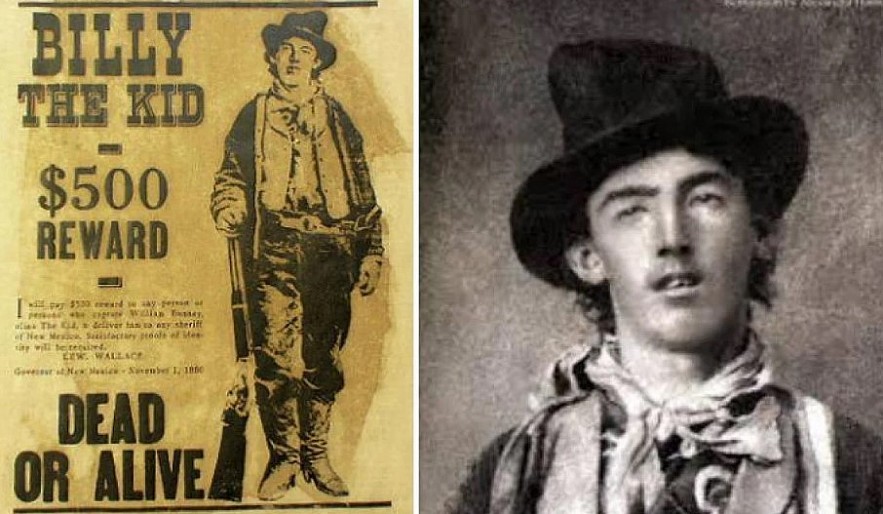 |
| Billy The Kid Artikel ini sudah tayang di VIVA.co.id pada hari Kamis, 14 Juli 2016 - 05:02 WIB Judul Artikel : 14-07-1881: Billy The Kid Tewas Ditembus Timah Panas Link Artikel : https://www.viva.co.id/arsip/795813-14-07-1881-billy-the-kid-tewas-ditembus-timah-panas Oleh : Lazuardhi Utama |
Billy the Kid, also known as William H. Bonney, was an American Old West outlaw and gunfighter who killed eight men before being shot and killed at the age of 21. He was born Henry McCarty and died on July 14, 1881. Additionally, he took part in the Lincoln County War in New Mexico, where he is thought to have killed three people.
McCarty lost his parents when he was fifteen. At the age of 16, he was detained for food theft in the latter part of 1875. Ten days later, he robbed a Chinese laundry. This time, he was caught, but he quickly got away. He left the New Mexico Territory for the neighboring Arizona Territory, becoming a fugitive from the law and an outlaw. McCarty adopted the name "William H. Bonney" in 1877. He is referred to as "Wm. Wright, better known as Billy the Kid" in two different versions of a wanted poster dated September 23, 1875.
After killing a blacksmith during a fight in August 1877, McCarty fled to New Mexico where he joined a gang of cattle rustlers because he was a wanted man in Arizona. When he joined the Regulators and participated in the Lincoln County War of 1878, he gained notoriety in the area. The murders of three men, including Lincoln County Sheriff William J. Brady and one of his deputies, were later linked to McCarty and two other Regulators.
When the Las Vegas Gazette in Las Vegas, New Mexico, and The Sun in New York City published articles about McCarty's crimes in December 1880, his notoriety increased. Later that month, Sheriff Pat Garrett managed to apprehend McCarty. McCarty was charged with killing Brady in April 1881, found guilty, and given the death penalty in May of that same year. He killed two sheriff's deputies in the process of breaking out of jail on April 28 and eluded capture for more than two months. On July 14, 1881, Garrett shot McCarty, who was by that time age 21, killing him in Fort Sumner. In the years that followed, rumors that McCarty had survived spread, and several men identified themselves as him. Billy the Kid, whose life and likeness have been frequently dramatized in Western popular culture, is still one of the most notorious figures from the era.
In Conclusion
A cowboy is a North American ranch hand who traditionally rides a horse to tend to cattle and does a wide variety of other tasks around the ranch. The legendary American cowboy of the late 19th century had his roots in the vaquero traditions of northern Mexico. Wranglers are a subset of cowboys who focus on taking care of the horses and mules used to herd cattle. Some cowboys also do work for or participate in rodeos outside of the ranch. Despite a less well-documented historical role, modern-day cowgirls continue to perform the same jobs as their 19th-century counterparts and enjoy high levels of respect as a result of their efforts. The cowboy's work is similar to that of cattle handlers in many other parts of the world, especially in South America and Australia.
The origins of the cowboy can be traced back to the early European settlers in the Americas, particularly those from Spain. Different equipment, clothing, and animal handling styles have developed over the centuries due to variations in terrain and climate as well as the influence of cattle-handling traditions from various cultures. The ever-practical cowboy adapted to modern life by updating his gear and methods, though many time-honored customs remain.
The Spanish verb rodear (to turn) is the origin of the English word "rodeo," which means "roundup." Until the 1950s, when the distinction between working cowboys and rodeo cowboys began to emerge, the two terms were used interchangeably. Before that time, everyone just assumed that cowboys worked. The earliest cowboys did double duty on ranches and in the roundups, where they showed off their skills.
Professional rodeos gave cowboys the opportunity to make a living performing their skills in front of an audience, just as many other athletes do. Working cowboys were in high demand for rodeos because of the need to corral and care for the animals. Most rodeo cowboys have also worked as working cowboys, and many have done both.
The working cowboy on his way into town would recognize the clothing of the rodeo cowboy. Instead of buttons, a cowboy's shirt would have snaps so that he could free himself if his shirt got caught on a bull's or steer's horns. The rodeo frequently borrowed looks from the early film industry. As a nod to history and as a form of showmanship, some rodeo competitors, especially women, embellish their outfits with sequins, bright colors, silver, and long fringes. Despite the ever-present threat of injury, the use of safety helmets in place of the traditional cowboy hat has not yet been accepted by modern riders participating in "rough stock" events like saddle bronc or bull riding.
 Top 20 Weirdest and Most Popular Songs of All Time Top 20 Weirdest and Most Popular Songs of All Time Some songs are weird but have become popular worldwide. What are your favorite weird songs? Let’s find out a list of weirdest and most popular ... |
 Top 200+ Cute and Funny Names for Facebook, Twitter, Tiktok, Instagram and Whatsapp Top 200+ Cute and Funny Names for Facebook, Twitter, Tiktok, Instagram and Whatsapp Whether you are searching for a name for a Facebook, Twitter, or even Instagram profile, getting cool and funny names is important. |
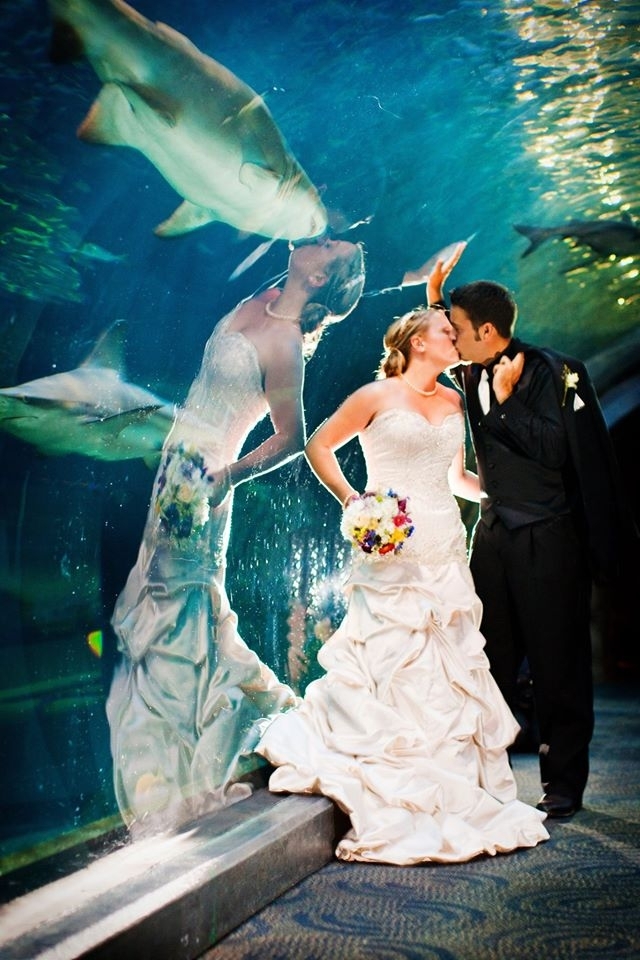 20 Most Embarrassing Moments Caught On Camera 20 Most Embarrassing Moments Caught On Camera Let's have fun with 20 most embarassing momens which were caught on camera! |
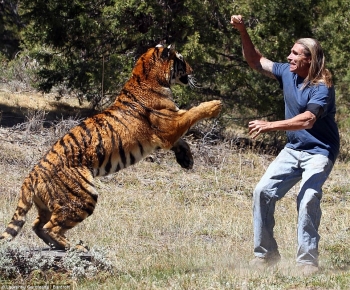 Top 20 Most Dangerous Jobs in The World Top 20 Most Dangerous Jobs in The World On a daily basis, people go to work to earn a living while also placing their lives at numerous risks. Check out the list of ... |



